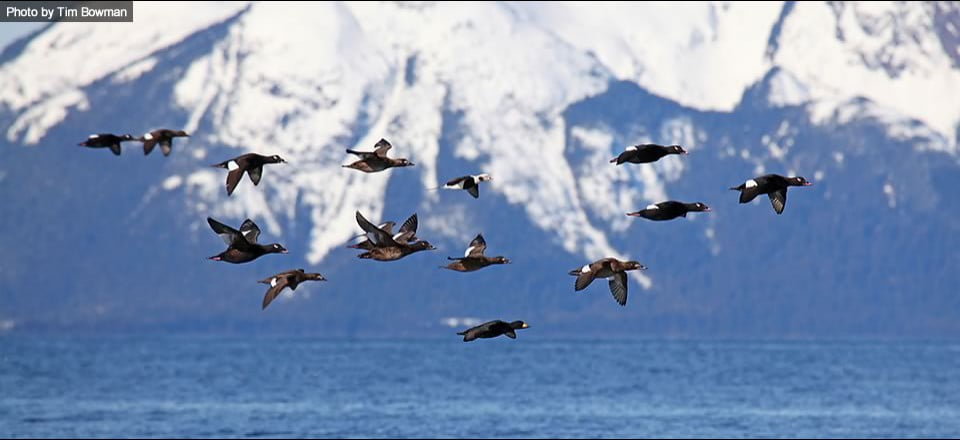Lead Institution(s): US Fish and Wildlife Service
Project Lead: Tony Roberts
Collaborator(s): Emily Silverman (USFWS), Suzanne Gifford (Gifford Consulting)
Focal Species: All Sea Ducks, Bufflehead (Bucephala albeola), Barrow’s Goldeneye (Bucephala islandica), Common Goldeneye (Bucephala clangula), Harlequin Duck (Histrionicus histrionicus), Long-tailed Duck (Clangula hyemalis), Common Eider (Somateria mollissima), King Eider (Somateria spectabilis), Spectacled Eider (Somateria fischeri), Steller’s Eider (Polysticta stelleri), Common Merganser (Mergus merganser), Hooded Merganser (Lophodytes cucullatus), Red-breasted Merganser (Mergus serrator), Black Scoter (Melanitta americana), Surf Scoter (Melanitta perspicillata), White-winged Scoter (Melanitta delgandi)
Project Description: We explored the effective sample sizes needed to accurately characterize the breeding distributions of sea ducks and considered the particular problem of identifying spatially distinct breeding areas. Unlike Lindberg and Walker (2007) who examined sample sizes needed to describe the distribution of birds among different states, we were interested in determining the number and boundaries of those states. Our analysis used existing telemetry data from three species of sea ducks to create biologically realistic breeding distributions, from which we sampled to explore the relationship between sample size and the strength of the resulting inference about the characteristics of the breeding distribution.
Interim Report FY15
Final Report
Publications:
Roberts, A., E. Silverman, S. Gifford. 2018. Sample size considerations for satellite telemetry and animal distributions. Journal of Wildlife Management 82:1536-1544.
https://doi.org/10.1002/jwmg.21504
